The NYC Public High School with Nine Black Students

How much can one man get done in twelve years? Well, quite a bit. “At this rate of decline” — in the admission of black and Latino students to the eight academic specialized schools in New York City — “six years from now there will be no black and Hispanic students admitted at all.” Okay, while that, thanks to math, is actually unlikely to occur, still that is absolutely the trending on admissions to gifted and talented schools in the city. We’re actually pretty close! For example, that’s nine black students admitted to Stuyvesant in 2013. How’s everyone else doing? “Hispanic students are 40.3 percent of the system. Currently, they make up 2.4 percent of Stuyvesant’s enrollment.” This is just one front on which the three long terms of the Bloomberg administration have architected the division of the city into rich and poor, and at the same time, white and non-white. (via)
Sour-Faced Beret-Wearers Even More Gloomy About Crushing Realities Of Existence: Study
“Research by a French academic to be delivered to the Royal Economic Society suggests that the country’s citizens are ‘taught’ to be miserable by elements of their own culture. Claudia Senik, a professor at the Paris School of Economics, argues that her country’s education system and its cultural ‘mentality’ make the French far less happy than their wealth and lifestyle suggest they should be.”
Inside Manhattan's Tower of Internet
by Alex Carp
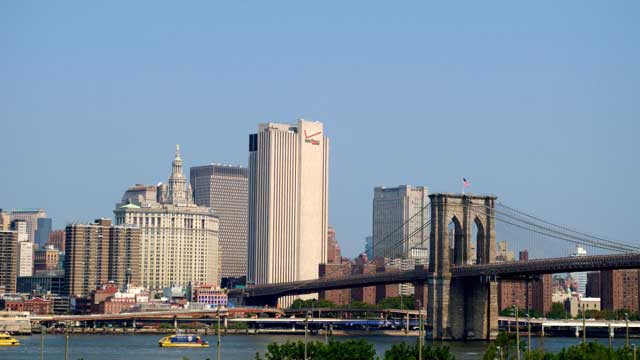
In January 2009, when architecture writer Andrew Blum arranged to have his home internet service repaired, the technician who arrived at his Brooklyn apartment told him that the source of the problem was relatively low-tech: a squirrel had been chewing the rubber-coated wire that ran from Blum’s building. Not much could be done, the technician said, other than wait for things to get better on their own, and they did. But Blum was shocked by his realization that the emails and websites he’d been reading on the computer had first passed through a wire in his back yard; his wonky home service was a physical problem, not a strictly technological one. He decided to follow that wire to its other end. Three years later, he had written a book.
“We treat the internet as if it were a fantasy,” he wrote in Tubes, which he finished last year, concluding that “thinking of the internet as a physical thing has fallen so far out of fashion that we’re more likely to view it as an extension of our own minds than a machine.” In many ways, this unmooring can make the internet seem like it’s nowhere in particular, or everywhere at once. But, as Blum learned, it’s very much in some places more than others.
After this week, a lot more of it will be at the foot of the Brooklyn Bridge. The New York Telephone Company building, a beige tower with thin vertical stripes at 375 Pearl Street, was built by the phone company in 1975 to be essentially a 32-floor shell around a machine: a few offices inside of a giant telephone switching control center. Verizon, whose logo faces the bridge from the building’s eastern side, still maintains an office on three of its floors, but the building remained mostly empty until the Sabey Corporation, a Seattle-based real estate company with an interest in commercial data centers, bought it out of foreclosure in 2011. One recent afternoon, Blum was invited to put on a hard hat and have a look inside.
“We gutted the building right back to the bones,” explained Dave Sabey, the company’s president, before showing Blum around. “It was unbelievable how much stuff we took out of here.”
“It was an analog ghost town,” Jim Harding, Sabey’s CTO, agreed. “One of our network engineers was saying there was a switch that was pulled out of here that was like 100 years old.” He gripped both hands around an imaginary object about the size of a volleyball. “A working switch!”
The trio, joined by a few others, followed Michael Bosco, the building’s operations manager, to the fourth floor, and stopped in front of a gleaming Caterpillar generator. Less than two weeks before opening, this was still a live construction site. On the other side of the floor, through a pair of 20-foot holes where equipment would be installed, the Brooklyn Bridge was visible under a grey sky.
“I always like the colors,” Blum said. “Caterpillar yellow. Cumming green.” A short pause. “Facebook blue.”
“John Deere green,” Sabey said.
“Detroit Diesel — Detroit is a blue engine too,” Bosco responded.
The biggest technology companies, like Google and Facebook, are data center companies, too; they design and build components of gigantic bunkers that they generally run in secrecy. Companies with smaller needs, or smaller resources, turn to third parties and rent by the kilowatt. The glass fibers that pulse data under the streets of Manhattan — one of which leads, after a while, to Blum’s back yard — enter 375 Pearl Street in two places, through the east and west walls of its basement. From there, they climb vertical bustles that run up each of the building’s external walls, and onto the building’s data-service floors, along with electricity and chilled water to power and cool the servers. (Most urban data centers have to repurpose an elevator shaft.)
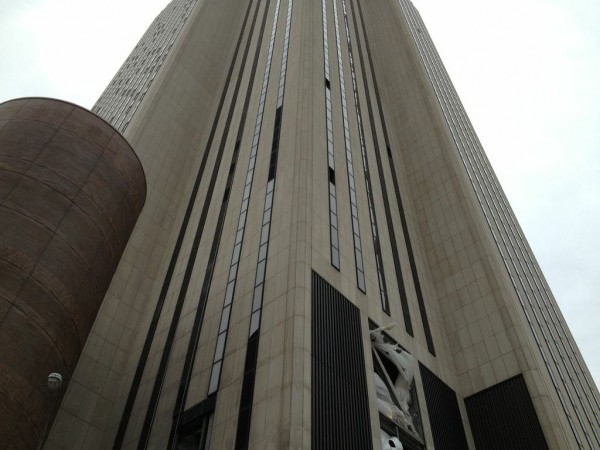
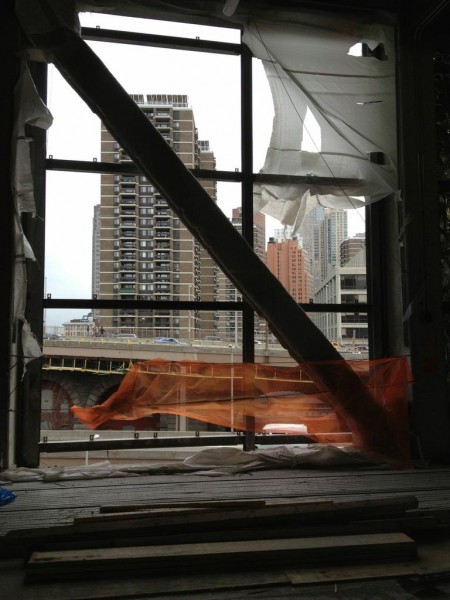
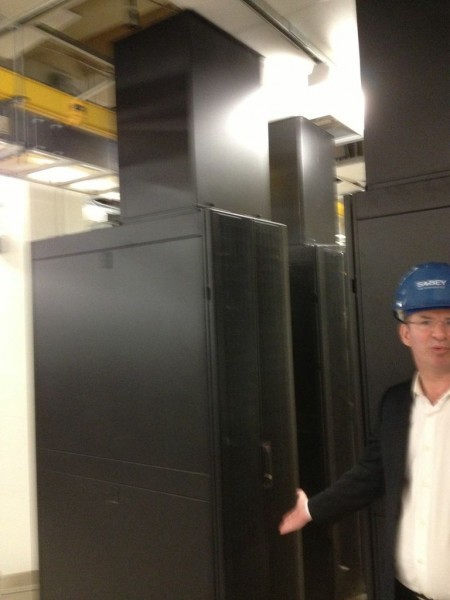
Sabey called the construction “the second largest project on the island” — he was referring to Manhattan — though “a distant second to the Freedom Center,” still going up a little under a mile west. The building is as big, by square feet, as any rural data center in the country. It will be the first data center to open in New York since Hurricane Sandy.
“If we had our generators plugged in, I would’ve lit this building like a Christmas tree,” he bragged. “And when they took that shot of Lower Manhattan blacked out, and that bright line — “
“That’s the joke I always use,” Blum said. “Everyone always asks me, you know, will the internet break? I’d say, ‘The last network standing will be Goldman Sachs.’” There were some chuckles of affirmation from the group. “And I’d say that for two years, and then Sandy happened, and that was it. It was really illustrated.”
Sabey’s Lower Manhattan strategy is twofold: their center responds quickly to the nearby industries that connect to it, but it’s also linked to data centers the company runs in parts of the country where electricity is less expensive, like rural Washington State. As Blum later explained, “Anyone doing major computing at the moment is combining being really close and being really far. You want to be close to where people are, but then you want to offload your serious computing to the place where computing cycles are cheap, where power is cheap. So if you’re running electronic medical records or corporate webmail, if you’re in a message box and you hit A, and it has to go to Oregon and back, twice, before the A shows up, you notice it. Which you notice sometimes on Gmail. If it’s right here you don’t notice that; it’s as if it’s at your desk. But if you’re doing a search through thirty gigs of email for one word, that can happen in Oregon.”
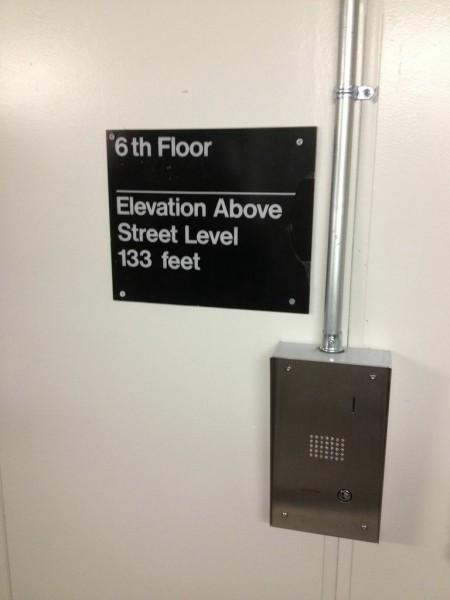

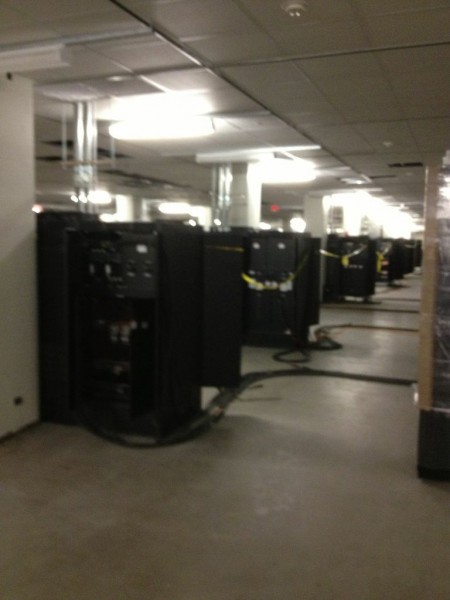
Even before visiting the first data floor that will be ready for operation, to be used by the New York Genome Center, Blum could barely contain his fascination. “It’s just such a strange, such an unusual building,” he said to Sabey. “Data centers usually disappear. They have no façade, they have no presence — not because they’re top secret, just because there’s nothing to them. And this is a building that’s in every single photograph of New York City.”
“It’s great,” Sabey replied. “Every time somebody pans it, pans the city, this is the pan. Because they pan the Brooklyn Bridge, and it’s usually shot from the other side. I mean, sometimes they scrape the Verizon sign, sometimes they don’t.” (The building also attracted some attention in 2011, when Occupy Wall Street protesters projected slogans onto it during a night march.)
Yet the changes inside the building hint at how a digital economy could replace a manufacturing one, without displacing the skyline. “It’s so striking to me because there’s this Ma Bell tradition of these big, of central offices, right? These big telecom buildings,” Blum stated. “And then you have this new, sort of ending current age of data centers, where nobody talks about them and we don’t acknowledge where they are. But my sense is that you’ll end up with a return to monuments. You end up with, as Google did, and as Facebook has done sort of subtly, advertising that that says, this is where we are. I do think it’ll be months or very short years before Google has a gift shop at 111 Eighth Avenue,” which the company purchased in 2010, generating headlines, after leasing from a third party.
Before leaving, Blum stopped by the NYGC setup, nearly complete. “This is when it starts to look like internet,” he said, pointing to the ceiling tubes that will hold data fiber, “when you’ve got the yellow fiber raceways.” Over coffee nearby, Blum mentioned how his familiarity with the world of data had led to its familiarity with him. He receives new invitations to visit the physical infrastructure of the digital world, like the one for today, and during his time in the building he had been asked to sign about a dozen books for architects, engineers, and executives. “I think of the internet as a place. And it’s fun to go back there,” he said. “But it’s a strange sort of place.”
“What I saw today was missing a bunch of the key elements.” For example, “it didn’t smell like the internet,” which Blum describes as a combination of ionized air, computers, and a specific kind of industrial air conditioning. Instead, “it smelled like paint. There were no cardboard Cisco boxes strewn around, to indicate that there were routers being plugged in.” The biometric thumb scanners hadn’t been plugged in yet. But they would be soon. “What excites me, again, is not only is it a very special kind of real estate,” he continued, still an architecture reporter at heart, “but it’s an amazing example of, you know, you’re inside a space that’s a blank spot in every iconic picture of New York City. And that’s sort of a perfect metaphor for the internet itself.”
You might also enjoy: Is Brooklyn Better? Has Manhattan Gotten Worse? Revisiting NY Mag’s “I Hate Brooklyn” Article Seven Years Later
Alex Carp is an editor of the McSweeney’s Voice of Witness book series. Top photo by bclinesmith; thumbnail photo by Rudy Norff.
New York City, March 21, 2013

★★ People were out under the heavy morning sky in their dark, functional winter gear. Even the man in red glasses and leather pants looked as if the leather had been chosen for warmth. Some widely spaced snowflakes danced past the windows for a while, then were gone. The space shuttle had been unwrapped but was still in its cage. The vendor selling churros from a two-wheeled shopping cart outside the school gate wore a hat and hood; the sun was a gray-white spot on the white-gray clouds. Then came a clear spell, as picturesque and noncommittal as the snow had been.
What Grown Men Look Like In Shorts
Attention, gentlemen, this is exactly the image you present to the world when you wear shorts.
Rich People Eat Like This, and Everybody Else Pays At the Counter
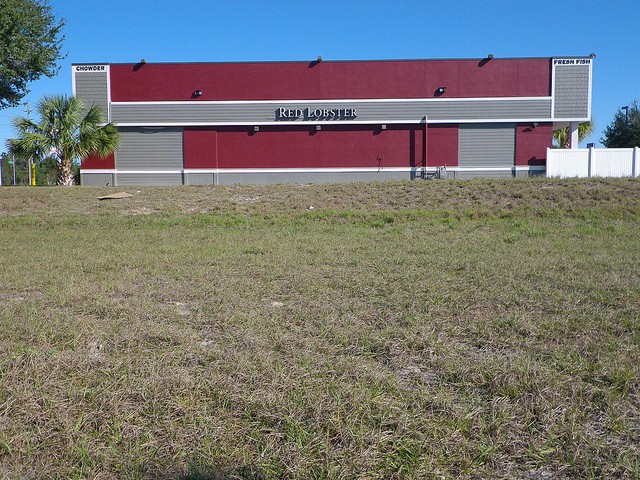
“Darden Restaurants (DRI) has been struggling to make its brands relevant again as diners increasingly head to chains like Chipotle and Panera, where they feel they’re getting restaurant-quality food without paying as much. As it looks for ways to catch up to shifting trends, Red Lobster this week started testing a ‘pay-at-the-counter’ concept at two locations near its headquarters.”
— The great divide between people who like to occasionally eat at a restaurant with table service and the food-obsessed coastal elite snobs grew a little wider this week, as mall chain stalwart Red Lobster began selling its Krab Dinners at the counter, McDonaldland-style.
Photo by Daniel Oines.
Have You Been Too Busy To Consider Scottsdale Lately?
“New Yorkers are just so busy. We’re embedding that seed of ‘Hey, maybe I’ve never considered Scottsdale before.’”
Best Guesses At Prince's Email Address

• prince@prince.com
• ☩
• ⸮((¯°·._.• ρяɨɲȼ€ •._.·°¯))?
• purplerain69@aol.com
• bballboy@hotmail.com
• ifuwant2emailme@gmail.com
• RIDEmy♞@yahoo.com
• letsgo☃@att.com
• anevermind@sugarwalls.com
• corvetteguy1999@msn.com
• nelson_princerogers@thetimes.com
• ♂♀@⚢.me
• vikingsfan4lyf@compuserve.com
• ::white doves carry a purple ruffled envelope adorned with calligraphed script as a response to your email::
Two Poems By Cate Marvin
by Mark Bibbins, Editor
High School: Industrial Arts
The lesson today is: someone always gets hurt.
Will it be you or another fool? This is a choice.
We provide the tools and materials. The saws,
the wood, nails, and supervision. Fall not now
in love, for it is merely a distraction from your
assignment. Now, create this uninspired name
plaque, build stacks of unstable shelves, lament
your lack of craft as the heat of your lust forms
in vaporous pools on the floor just below your
work table. You thought this class would mean
an easy credit. Welcome to our workhouse. No
one leaves this building whole. Consider now
how this building’s roof’s akin to the lid of a jar,
tightly screwed, and you’re the inhabitant within,
you’re scrabbling at its glass, yet we’ve punched
no holes in that aforementioned lid. Now, make
something! Make something no one can use that
no one wants. Don’t ask why. It builds character.
Someday you’ll look back on these days fondly.
Here are your goggles. There’s the eye-rinsing
station. No, this is not art! Ladies, stand back!
We don’t want you cutting those pretty fingers
off or sawing yourselves in half. This is a man’s
work. You, wipe that smirk off your face. Last
thing I need is one you girls dying on my watch.
High School as a Dead Girl
High School was us and we. We learned our grammar there.
Became devised by bells sawing halls sharp as number two
pencils: we grew thin, grew dark as men in its hallways, we
grew up on men, our breasts their beards, their beards our
breasts, while we cracked open beer cans in the Girls’ Room,
swug down foam minutes before walking into Homeroom.
I was known to be dumb, detentioned, a kill-myself kind of
girl, but it was you who shot herself in the head. What kind
of girl shoots herself in the head? You wanted a quality kill?
Take some sleeping pills, spare your mother the blood-grief.
You always took the hit for me. Turned around in your seat.
Did you hear what they said? Yes, some of us are intending
to go to college. Loser grief. Then the tarry hot of the parking
lot rose up, black, promising me any boy’s face bent to crack
against my face that was becoming a face: when we wanted
what we all wanted. To be pretty. Which then meant famous.
Cate Marvin co-founded VIDA: Women in Literary Arts. Her third book of poems, Oracle, is forthcoming from W.W. Norton & Co. this year.
Sure, take some time to appreciate these. They deserve reflection. Then, once you’re ready, there are plenty more poems to enjoy. Hell, make an afternoon of it. You may contact the editor at poems@theawl.com.
